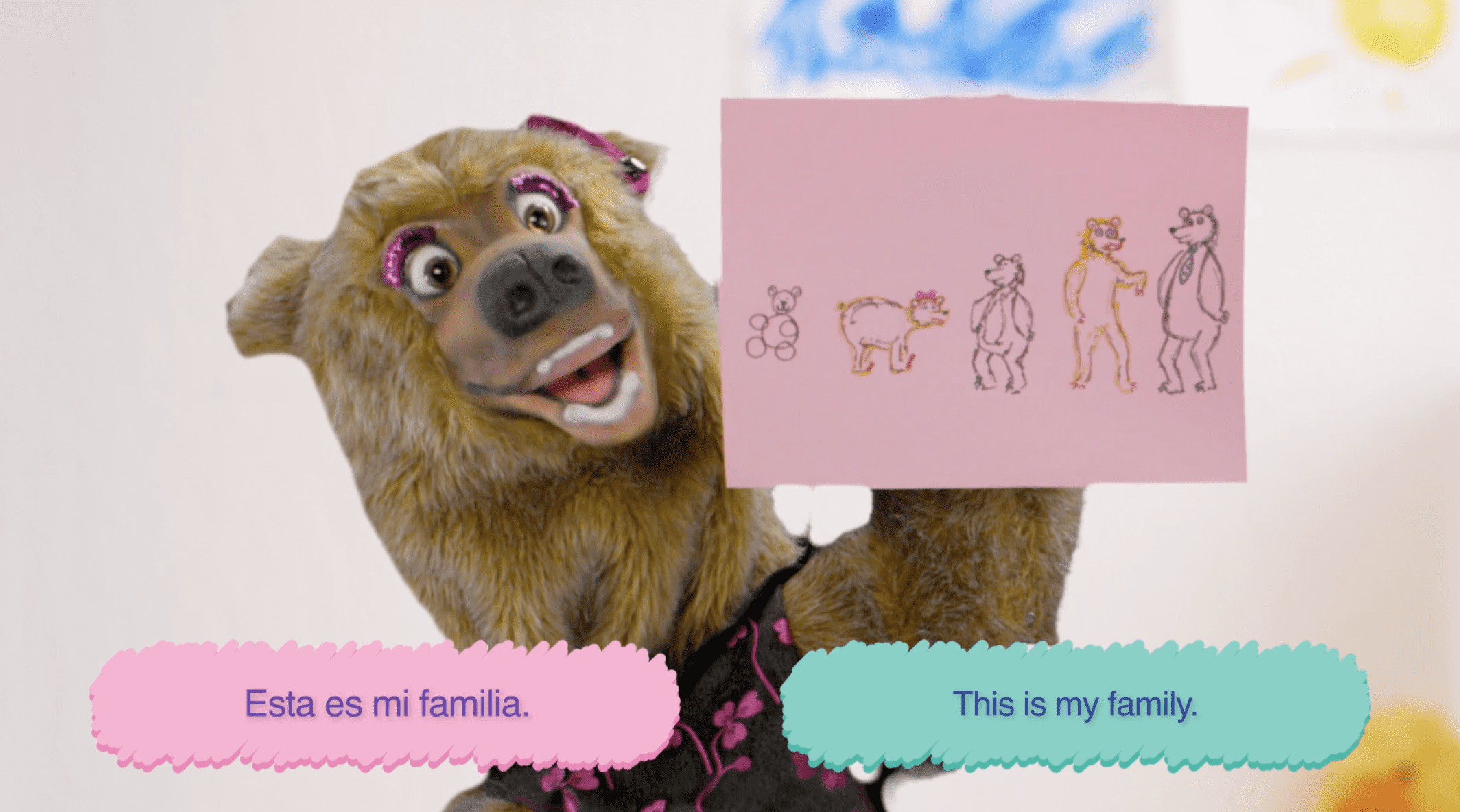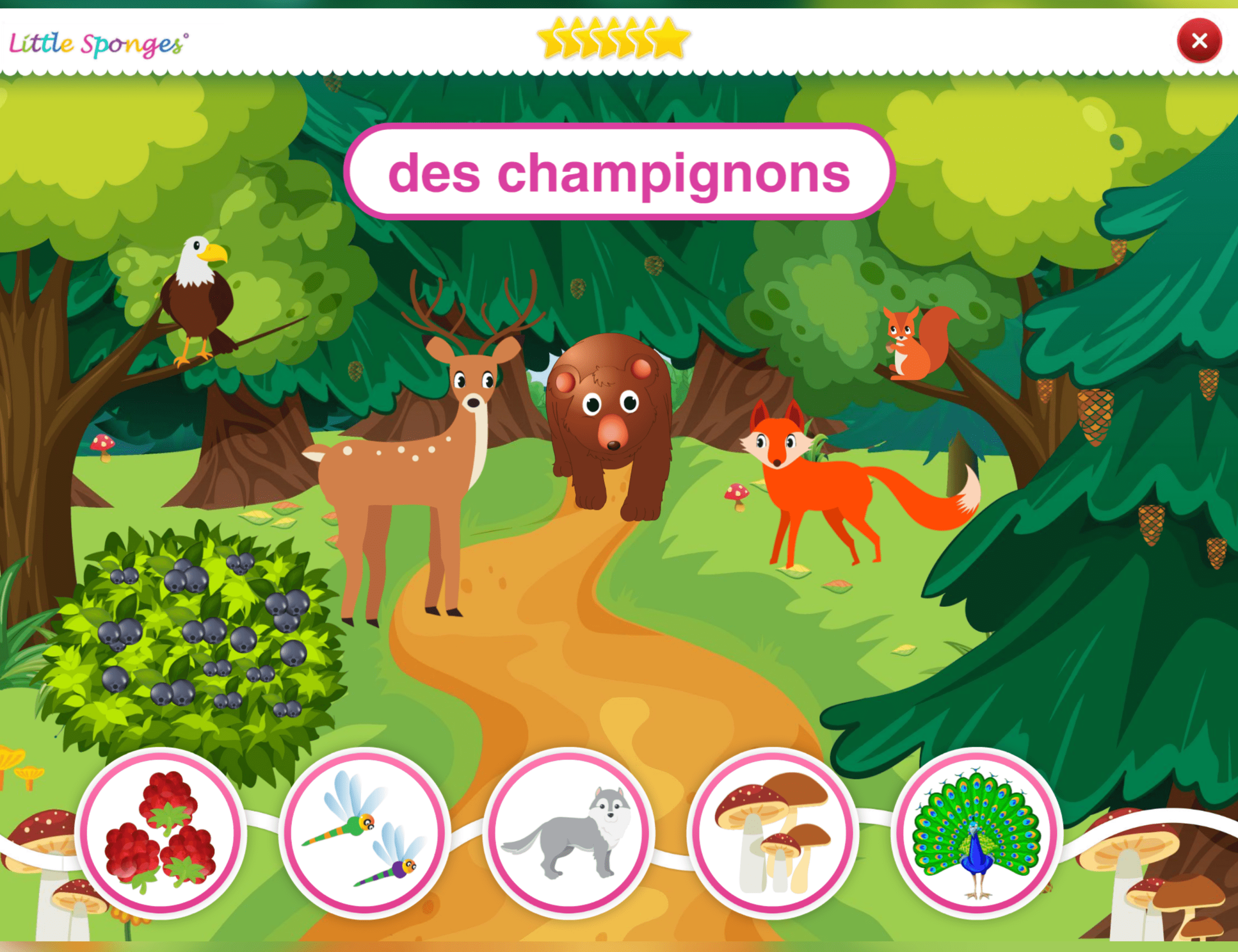It is no secret that dual-language programs are cropping up in schools more than ever. After all, where there is a need, there is a solution. According to an NEA Policy Brief, by 2025 nearly 25% of students in public schools will be dual language learners (DLLs), the fastest-growing student population group. This applies to both students who are learning English as a second language (ESL) and native English speakers who are learning another language.
In either case, the benefits of being bilingual are plentiful, and in today’s global economy, bilingual students have an edge over their monolingual counterparts.
The belief that every student deserves a quality dual-language education is at the core of Little Sponges’ values. While we provide the an expansive and captivating dual-language curriculum, there is one important aspect in a child’s education that goes beyond the curriculum: family engagement.
This responsibility falls on both the parents and the teacher, though there’s no need to fear! In this article we will be sharing simple tips for teachers and parents to follow that will ensure the best possible learning outcome for your little linguist!

For Teachers:
1. Know Your Students’ Backgrounds
It is difficult to think of ways to involve parents if you know nothing about them. Before the school year begins, make it a point to learn the home languages and cultures of the students on your class roster. This will help you tailor both your classroom and lesson plans to best meet their needs.
Once you have found out which home languages and cultures are represented in your incoming class, you can customize your classroom to create the most optimal learning environment for your learners. Remember, for some children, this may be their very first time in an English-speaking school, or may be their first time in school at all!
Provide multilingual books and label things in the classroom in English and other languages to make your students feel welcomed. All students will benefit from exposure to print and learning that there are different ways to say “restroom,” for example. It may even save them from an embarrassing moment later in life when they travel abroad. 🙂 If you are not sure how to spell the word in another language, you can use Little Sponges® flashcards, find the translation in the curriculum document, or try Google Translate and ask parents to confirm the translation. They will love that you care enough to ask for their input and be more comfortable communicating with you in the future.
2. Invite Your Parents to the Classroom at the Beginning of the Year
As an extension of #1, your “Meet the Teacher” evening provides a fantastic opportunity to lay the groundwork for successful parent-teacher relationships. Use this time to learn more about each family in your class, as it may provide further insight that you could not receive from the official school records.
Parents of ESL students are often especially intimidated by their child’s school. A common misconception is that if the parent is not involved in school functions or activities, that they do not care about their child’s education. In reality, the opposite is often true, but language barrier and work schedules can hinder their ability to participate in school activities. When you actively seek out to learn about their family, they will feel more welcomed in your classroom, and likely more confident that they can help their child with schoolwork.
This is also a great time to familiarize parents and family members with the Little Sponges platform and how you plan to use it to extend the learning beyond the classroom. Help them log into the account on their smartphones or tablets and explore the various modules and elements of the website.
3. Keep Parents Involved Throughout the School Year
Award winning ESL teacher Astrid Emily Francis believes that the core of her students’ success relies on parent engagement and parent-teacher partnerships. In her blog post, she explains two different methods that she used to involve her ESL students’ parents, despite the language barriers.
One activity that she completed was to ask parents to write down their “wishes and desires” for their children’s school year and/or future. She then placed them on a posterboard in her classroom. In addition to focusing on academics, parents were also encouraged to think about their personal and social desires for their children.
Then, later in the school year, she welcomed parents back to her classroom to discuss their children’s mid-year progress. Upon seeing that some parents were discouraged by their child’s slow progress, she switched up the activity and had parents write down something their child is good at or loves to do at home. This conversation immediately lifted the mood, and created a more positive learning environment.
These sort of activities give parents the opportunity to focus on both their child’s other academic and character strengths, rather than feel discouraged by their lack of proficiency in English.
4. Enable Flexibility and Personalized Learning
Little Sponges® offers a flexibility that allows the teacher to select any theme, learning module, lesson and activity based on the specific needs of the students and class schedule. The program also gives you access to multiple grade levels so that students can advance or go back and review the materials as needed. This makes it easier for you to implement the program and allows for a smooth integration into your daily lesson plans.
Keep parents updated on their child’s progress by periodically sending home updates. If the child has been practicing their sight words, relay that information to the parents! The idea of planning a home lesson can be intimidating to many parents, so updates on what their child is currently working on within the Little Sponges program will help them choose what to focus on at home. This way, you know the student is working on what they need to based on their academic needs, rather than just doing something they’ve already mastered.
5. Flip the Classroom
While it is the teacher’s job to teach both basic and complex academic concepts, parents can help the teachers in a tremendous way by flipping the classroom.
When a student is learning a new language, they need to learn the vocabulary before they can understand and learn the content. You can use Little Sponges® program to “flip the classroom” by giving students the opportunity to learn and practice new vocabulary at home prior to introducing the topic in the classroom. This way ELL and DLL students can learn the new vocabulary at their own pace in the comfort of their home and then, be prepared to learn and comprehend new concepts and content in the classroom.

As you plan your lessons, send students home with simple vocabulary activities before you cover the topic in the classroom. For example, one activity you could do is send the child home with a list of “family” vocabulary words. Have them watch the Playground Adventure and draw a picture of their family with Mishka and Frog, labeling each member in both languages. Then hang the pictures up in your classroom to reference throughout your “family” lesson.
They likely already know this vocabulary in their native language, and by leveraging “comprehensible input” in the Little Sponges lessons, they will create connections between their native language and second language.
6. Host Culture Parties and Ask Parents to Bring in Their Own Materials
No matter the home language or culture, having a diverse student population is a great time to teach students about the many different cultures of the world.
For example, if you have a Chinese family in your class, celebrate the Chinese New Year! Do you have Spanish speakers from Mexico? El Día de los Muertos!
Students and parents alike will love the opportunity to share their culture and traditions with their peers. You could ask the family to bring in books, toys, or food related to their culture and language to share with the class. These celebrations could amplify your Little Sponges lessons if you are able to tie them in with the material currently being taught as well.

For Parents:
Educational technology programs such as Little Sponges are fantastic tools that make it easier than ever for parents to be involved in their child’s education. Because Little Sponges is available for parents to use at home on devices such as computers, tablets, and smartphones, the student will not be leaving their language learning at the school doors.
If you’re a parent, you may be asking yourself: How can I help my child if I don’t speak the language they are learning? No need to fear!
Little Sponges provides “comprehensible input” by teaching vocabulary in both languages so you can see each word and/or phrase in the second language as well as in your native language. With this, even monolingual parents will feel equipped to review and practice the vocabulary with their children at home, providing the consistency and repetition that greatly enhances language acquisition. Not only will this practice encourage the student’s second language skills, but will simultaneously build their native language skills.
1. Prepare to Be Involved
In a study conducted by the University of Nebraska Foreign Language and Psychology departments, a team of Ph.D. researchers concluded: “it is likely that the programs that do best will be those that encourage parents to not only participate but to lead.” Take the initiative to ask your child’s teacher what you can do to to help your child. While this applies to all academic areas, it is especially important in language acquisition, which is the building block for later learning.
2. Make it a Daily Part of Your Life
Repetition is the key to learning, especially when it comes to language acquisition. However, it is difficult for teachers to provide that repetition and keep their students engaged. You can utilize Little Sponges learning adventures to integrate the vocabulary into your daily tasks. For example, if your child is currently learning about fruits and vegetables at school, review the Garden Adventure learning module together and ask them to name fruits and vegetables in both languages as you stroll through the grocery store.
3. Don’t Fear Technology
We understand that new technology in this digital age can be frightening. You only want what’s best for your child’s well being, and this likely includes limited screen time. While this is generally a good rule, the American Academy of Pediatrics states that when used correctly, media usage in an educational context exposes children to new ideas, helps with knowledge acquisition, and provides increased opportunities for social contact and support.
Children’s media expert Sara DeWitt envisions a future where we’re excited to see kids interacting with screens and shows us exciting ways new technologies can actually help them grow, connect and learn.

As DeWitt says in her TEDtalk, kids love playing games with their parents. Being involved in a child’s interest not only excites the child, but empowers the parents to take an active role in their child’s education.
While there are a many games on the internet that are simply for entertainment purpose, children enjoy seeing familiar characters in the games they play, which is why Little Sponges has educational games featuring the main characters of our program, Mishka and Frog. These interactive games reinforce the vocabulary that children are exposed to in the Little Sponges learning videos.
4. Emphasize the Benefits
At first it may be difficult for your child to understand the value of learning two languages. This can be especially true for children whose home language matches that of their school and community. In their minds, for example, they can already talk to everyone in English, so what use is learning Spanish? To combat this, find ways to reinforce that what they’re learning has real-world value, on a scale they can understand.
Perhaps they were able to make a new friend on the playground because of their Spanish language skills, or they were able to say hello to their classmate’s Spanish-speaking mother. For more imaginative children, framing bilingualism like a superpower can ignite their sense of wonder and make them want to continue to sharpen their “superpowered” brains.
One day, while eating at a restaurant, we found out that our waitress spoke Russian. When my children started speaking Russian to her, she was extremely excited and we received exceptional service and free ice cream! This was a great way to show my children the benefits of being bilingual and got them even more excited about continuing to learn Russian and other languages!
